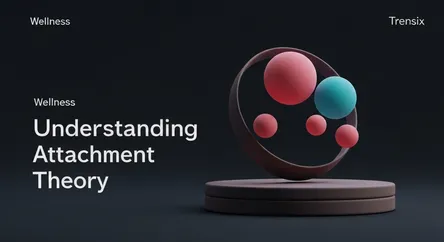Wellness
Understanding Attachment Theory

Explore attachment theory, a psychological model explaining how early bonds with caregivers shape our adult relationships and emotional well-being.
What is it?
Attachment theory is a psychological framework developed by John Bowlby. It suggests our earliest bonds with caregivers create a blueprint for future relationships. The quality of this initial connection shapes one of four main attachment styles: secure, anxious-preoccupied, dismissive-avoidant, or fearful-avoidant (disorganized). This style influences how we perceive intimacy, dependency, and interpersonal connection throughout life.
Why is it trending?
The concept has surged in popularity on social media and in therapy as a tool for self-understanding. It provides a clear, accessible language to explain complex relationship dynamics and recurring patterns. People are increasingly using attachment styles (e.g., anxious, avoidant) to navigate dating and personal growth, making it a cornerstone of contemporary wellness and mental health discussions.
How does it affect people?
An individual's attachment style profoundly impacts their emotional regulation and relationship satisfaction. A secure attachment often leads to stable and trusting partnerships. In contrast, insecure styles can manifest as fear of abandonment, difficulty with intimacy, or a cycle of turbulent relationships. Recognizing your style is the first step toward healing and developing "earned security," fostering healthier connections and improving overall well-being.